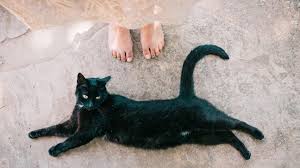The Itchy Left Palm: Causes, Superstitions, and Treatments

Itchy palms can be both an irritating sensation and a cause for concern. The left palm, in particular, has been the subject of various cultural interpretations and medical inquiries. This article delves into the potential causes of an itchy left palm, examines the superstitions associated with it, and explores available treatments.
Understanding the Sensation
Itching, or pruritus, is an uncomfortable sensation that prompts the desire to scratch. It can be caused by various factors, ranging from simple skin irritation to more serious underlying medical conditions. The left palm is not immune to these triggers and can become itchy due to several reasons.
Common Causes of Itchy Left Palm
- Dry Skin (Xerosis)
- Description: Dry skin is a prevalent cause of itching. It can result from environmental factors such as cold weather, low humidity, or excessive hand washing.
- Symptoms: The skin may appear rough, flaky, and tight. In severe cases, it can crack and bleed.
- Treatment: Regular moisturizing with emollient creams and avoiding harsh soaps can alleviate symptoms.
- Dermatitis
- Description: Dermatitis refers to inflammation of the skin and can be classified into several types, including contact dermatitis, atopic dermatitis, and seborrheic dermatitis.
- Symptoms: Red, inflamed, and itchy skin that may blister or ooze in severe cases.
- Treatment: Identifying and avoiding irritants or allergens, using corticosteroid creams, and maintaining proper skin hygiene can help manage dermatitis.
- Allergic Reactions
- Description: Allergic reactions to substances such as certain metals, latex, or plant materials can cause localized itching.
- Symptoms: Swelling, redness, and itching at the contact site.
- Treatment: Avoiding known allergens, using antihistamines, and applying topical corticosteroids can provide relief.
- Psoriasis
- Description: Psoriasis is a chronic autoimmune condition that accelerates skin cell turnover, leading to thick, scaly patches.
- Symptoms: Silvery scales, redness, and itching are common on affected areas, including the palms.
- Treatment: Topical treatments, phototherapy, and systemic medications can help control psoriasis.
- Eczema (Atopic Dermatitis)
- Description: Eczema is a chronic skin condition characterized by inflamed, itchy skin.
- Symptoms: Red, itchy patches that may weep or become crusty.
- Treatment: Moisturizers, topical steroids, and avoiding triggers such as stress and certain foods can manage symptoms.
- Infections
- Description: Fungal, bacterial, or viral infections can cause localized itching.
- Symptoms: Signs of infection such as redness, swelling, warmth, and possible discharge.
- Treatment: Antifungal, antibiotic, or antiviral medications are required depending on the type of infection.
- Neuropathy
- Description: Damage to the nerves can cause itching without any visible skin changes. Conditions such as diabetes and carpal tunnel syndrome can lead to neuropathy.
- Symptoms: Tingling, numbness, and itching.
- Treatment: Managing the underlying condition, medications for nerve pain, and physical therapy can help alleviate symptoms.
Superstitions and Cultural Beliefs
Itchy palms have long been associated with various superstitions and cultural beliefs. These beliefs often differ based on geographical location and cultural background. The left palm, in particular, is often linked to financial fortunes or personal interactions.
- Financial Superstitions
- Left Palm Itching: In many cultures, an itchy left palm is believed to signify that money is going to leave you, implying financial loss or an upcoming expense.
- Right Palm Itching: Conversely, an itchy right palm is often thought to indicate that you will receive money or a financial gain.
- Gender-Based Beliefs
- In some traditions, the interpretation of itchy palms varies based on gender. For example, in certain cultures, an itchy left palm for men means they will lose money, while for women, it signifies incoming wealth.
- Personal Interactions
- Some superstitions link an itchy left palm to upcoming significant interactions. It may be seen as a sign that you will meet someone new or have an important conversation.
- Astrological and Spiritual Interpretations
- Astrologers and spiritual healers sometimes associate itchy palms with cosmic energies and spiritual messages. An itchy left palm might be interpreted as a signal from the universe or a call to pay attention to one’s spiritual journey.
Medical Perspective
From a medical standpoint, the sensation of itching, including that on the left palm, is usually related to skin conditions, systemic diseases, or neurological issues. Proper diagnosis and treatment are essential to address the root cause and provide relief.
Diagnostic Approach
When evaluating an itchy left palm, healthcare professionals consider a comprehensive approach:
- Medical History
- Gathering information about the onset, duration, and intensity of the itching.
- Identifying any potential triggers, such as new skincare products, jewelry, or recent activities.
- Physical Examination
- Inspecting the skin for signs of dryness, redness, scaling, or lesions.
- Checking for systemic signs that might indicate an underlying condition.
- Laboratory Tests
- Blood tests to check for diabetes, liver function, and other systemic conditions.
- Allergy testing to identify specific allergens.
- Skin biopsy in rare cases to diagnose conditions like psoriasis or eczema.
Treatment Options
Treatment for an itchy left palm varies based on the underlying cause. Here are some common strategies:
- Topical Treatments
- Moisturizers: Regular application of emollient creams to prevent and treat dry skin.
- Corticosteroids: Topical steroids to reduce inflammation and itching associated with dermatitis and eczema.
- Antifungals: Creams or ointments for fungal infections like ringworm.
- Systemic Treatments
- Antihistamines: Oral medications to reduce itching from allergic reactions.
- Immunosuppressants: For severe cases of psoriasis or eczema, drugs like methotrexate or cyclosporine may be prescribed.
- Antibiotics/Antivirals: Oral or topical treatments for bacterial or viral infections.
- Lifestyle and Home Remedies
- Proper Skin Care: Using gentle, fragrance-free soaps and moisturizers.
- Avoiding Irritants: Steering clear of known allergens and irritants, such as certain metals or chemicals.
- Stress Management: Stress can exacerbate skin conditions, so techniques like yoga, meditation, and deep-breathing exercises can be beneficial.
- Alternative Therapies
- Natural Remedies: Some people find relief using natural oils like coconut oil or aloe vera.
- Acupuncture: Used by some to manage chronic itching and underlying conditions.
Preventive Measures
Preventing itchy palms involves maintaining healthy skin and avoiding known triggers. Here are some preventive measures:
- Hydration
- Keeping the skin hydrated by drinking plenty of water and using moisturizers regularly.
- Hand Hygiene
- Washing hands with mild, fragrance-free soaps and drying them thoroughly to prevent irritation.
- Protective Gear
- Wearing gloves when handling harsh chemicals or when the weather is cold and dry.
- Healthy Lifestyle
- Maintaining a balanced diet, exercising regularly, and managing stress can contribute to overall skin health.
When to Seek Medical Attention
While itchy palms are often a minor inconvenience, there are times when medical attention is necessary:
- Persistent Itching
- If the itching persists for more than a few days and does not respond to over-the-counter treatments.
- Severe Symptoms
- Intense itching that interferes with daily activities or sleep.
- Signs of infection such as increased redness, warmth, swelling, or pus.
- Systemic Symptoms
- If the itching is accompanied by other symptoms such as fever, weight loss, or fatigue, which might indicate an underlying systemic condition.
Conclusion
An itchy left palm can be an annoying and uncomfortable symptom, but it is usually manageable with proper care and treatment. Understanding the potential causes, from dry skin and dermatitis to infections and neuropathy, is essential for effective management. While cultural superstitions about itchy palms are intriguing and diverse, it is important to consider medical explanations and seek appropriate treatment when necessary. By maintaining good skin care practices and addressing any underlying health issues, one can find relief from this bothersome symptom and maintain overall skin health.
4o





